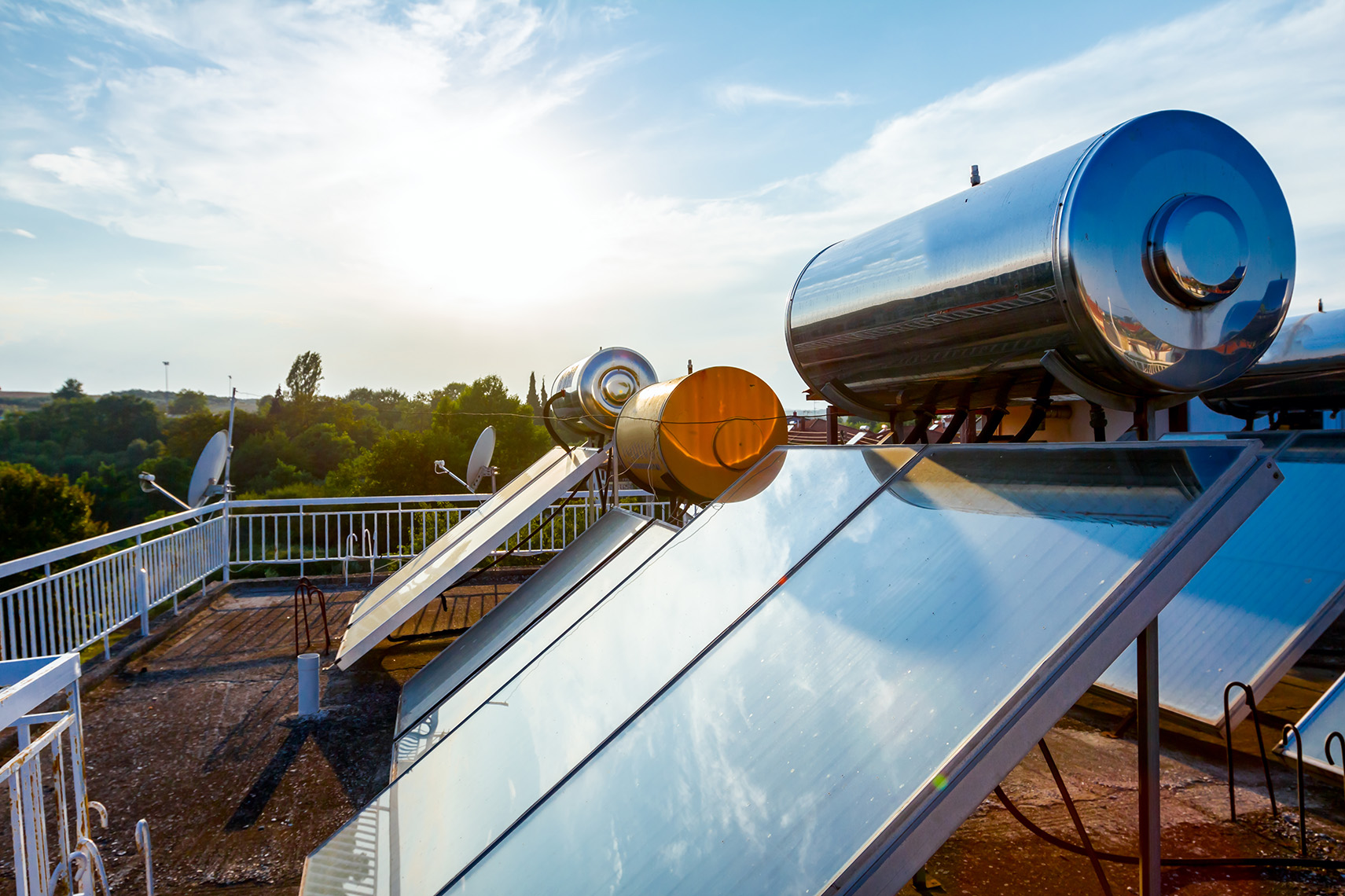Solar heating system

Energy conservation has become a long-term development strategy for sustainable development in China, serving as one of our country's basic national policies. Solar energy is an important renewable resource, and solar water heaters are devices that convert solar energy into thermal energy, heating water from low to high temperatures to meet people's needs for hot water in daily life and production. Solar water heaters can be classified into vacuum tube solar water heaters and flat-plate solar water heaters based on their structural forms. Mainly, vacuum tube solar water heaters dominate the market, accounting for 95% of the domestic market share.
A vacuum tube household solar water heater consists of heat collector tubes, a storage tank, supports, and other related components. The conversion of solar energy into thermal energy primarily relies on the vacuum heat collector tubes. These tubes utilize the principle of hot water floating up and cold water sinking to create a micro-circulation, achieving the desired hot water temperature. China's solar thermal utilization technology has developed rapidly, and household solar water heaters have been widely used. Currently, large-scale solar water heater equipment is extensively used in hotels, schools, factories, and other institutions.
This equipment is used for hot water supply in schools. However, the current solar water heaters face some issues. When solar energy is insufficient, the heaters need to rely on electric heating elements for water heating. The existing water tanks only have high and low water level controls, resulting in the heating of the entire tank even when only a small amount of hot water is needed. This leads to a waste of electricity. The school believes that it is necessary to set the water level in the tank to a specific percentage to reduce the occurrence of heating the entire tank and conserve electricity.
▸ Additionally, it has been proposed that students have a certain time pattern when using hot water, so there is a requirement to set the hot water supply schedule accordingly. This can further enhance energy efficiency.
▸ Furthermore, it is desired that the relevant settings can be enabled, disabled, and configured through the internet. This allows for remote management and adjustment of the solar water heater system, providing greater flexibility and convenience.
▸ Lastly, there is a requirement to record real-time data such as solar intensity, water level, temperature, and the status of various control points. This enables problem and fault tracing, ensuring timely identification and resolution of any issues that may arise with the solar water heater system.

The proposed solution involves the integration of PLC (Programmable Logic Controller) and touch screen control. Sensors for water level, light intensity, and temperature transmit data to the PLC through analog signals. The touch screen communicates with the PLC to enable human-machine interaction and control. This setup allows for precise monitoring and adjustment of the solar water heater system, optimizing energy efficiency and ensuring reliable hot water supply according to the needs of the school.
▸ The timing operation for hot water supply can be achieved through the scheduling function of the touch screen control. This allows for not only daily startup and shutdown control but also the ability to modify the time and cancel the plan for the current day at any time through the corresponding function buttons. This flexibility further enhances energy efficiency by ensuring that hot water is available only during the desired time periods, reducing unnecessary heating and energy consumption.
▸ By connecting the touch screen to the school's switch through an Ethernet cable, any computers within the school network can access the touch screen since they are all connected to the same switch and network segment. This allows for remote monitoring and control of the PLC program, as well as modifications to it, through the touch screen's remote access functionality.
▸ Utilizing the VNC function of the touch screen, users within the internal network can directly access the current screen of the touch screen from PCs, phones, tablets, or other devices. This enables them to perform relevant control operations remotely. For external network users, a VPN connection is required first. Once authenticated, they can perform the same operations as internal network users.
▸ The data collection function of the touch screen allows for real-time recording of solar intensity, water level, temperature, and the status of various control points every minute. Historical trend charts can be generated to visualize the collected data in a graphical format, facilitating easy monitoring. Additionally, the data can be saved in Excel format to a USB drive or directly uploaded to a remote cloud database using an FTP client. This ensures traceability and analysis of system performance, allowing for prompt identification and resolution of any issues or faults.
“Data Acquisition”
The touch screen front panel boasts an IP65 protection rating, ensuring that low-pressure water spray from any angle has no impact on the operation and functionality of the touch screen. This fully satisfies the normal usage requirements of the equipment.
“Timed Programming Control”
Operations are facilitated through the QR Code component, which allows for the flexible configuration of displayed content. This enables customers to complete equipment operation and payment quickly and effortlessly.
“VNC Remote Control”
Remote control can be achieved through the VNC function, allowing operators to manipulate the equipment even when they are located remotely.
Through the scheduling function of the touch screen, users can freely set daily timed heating periods. Combined with VNC and VPN functionality, remote control of the equipment can be achieved, allowing customers to remotely monitor and maintain the device status. Additionally, data collection enables direct retrieval of sensor information, which is highly beneficial for creating data reports and tracing and analyzing issues and faults.














